Excavation Contractors O'Fallon
Top Excavation Companies in O'Fallon
Receive 3 FREE Excavation Contractors quotes for your project today! Compare profiles, reviews, accreditations, portfolio, etc... and choose the best offer.

BMB Excavation LLC
44 reviewsNorthwood, USBMB Excavation LLC BMB Excavation LLC is a fully insured, professional company with years of experience, located in Northwood NH. We specialize in a wide variety of services in residential and commercial work, such as septic system, foundation, sewer, water, drains, utilities, and excavation. We work hard with homeowners and contractors to meet deadlines on all projects and tasks, we strive on getting passed challenging obstacles to insure the same vision or goals. Our mission is to provide quality service to customers and contractors and build professional relationship to obtain same vision, plan, and goal.
- Services
- Why Us?
- Testimonials
- Gallery
Get Quote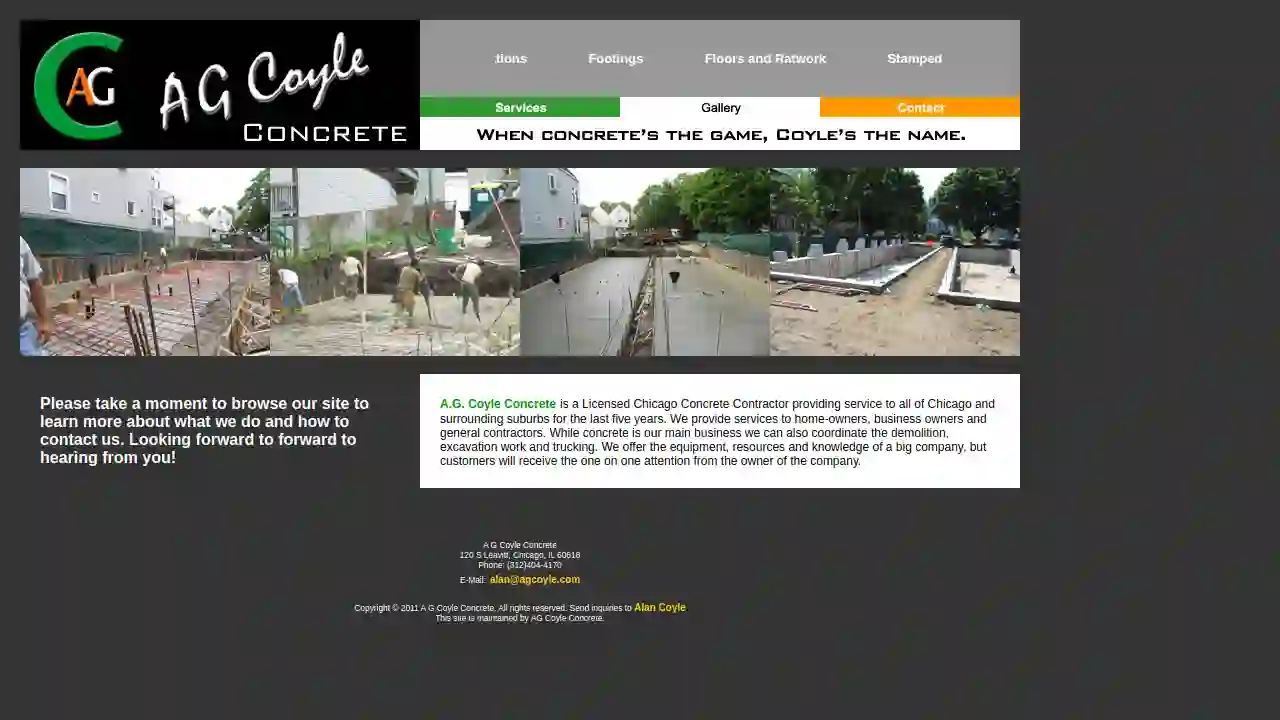
AG Coyle Concrete
120 S Leavitt, Chicago, 60618, USA.G. Coyle Concrete: Your Trusted Chicago Concrete Contractor A.G. Coyle Concrete is a licensed and experienced Chicago concrete contractor serving the city and its surrounding suburbs for the past five years. We are dedicated to providing top-notch concrete services to homeowners, business owners, and general contractors alike. While concrete is our core expertise, we also offer a comprehensive range of services, including demolition, excavation, and trucking. We bring the resources and knowledge of a larger company, but with the personalized attention you'd expect from a family-owned business.
- Services
- Why Us?
- Gallery
Get Quote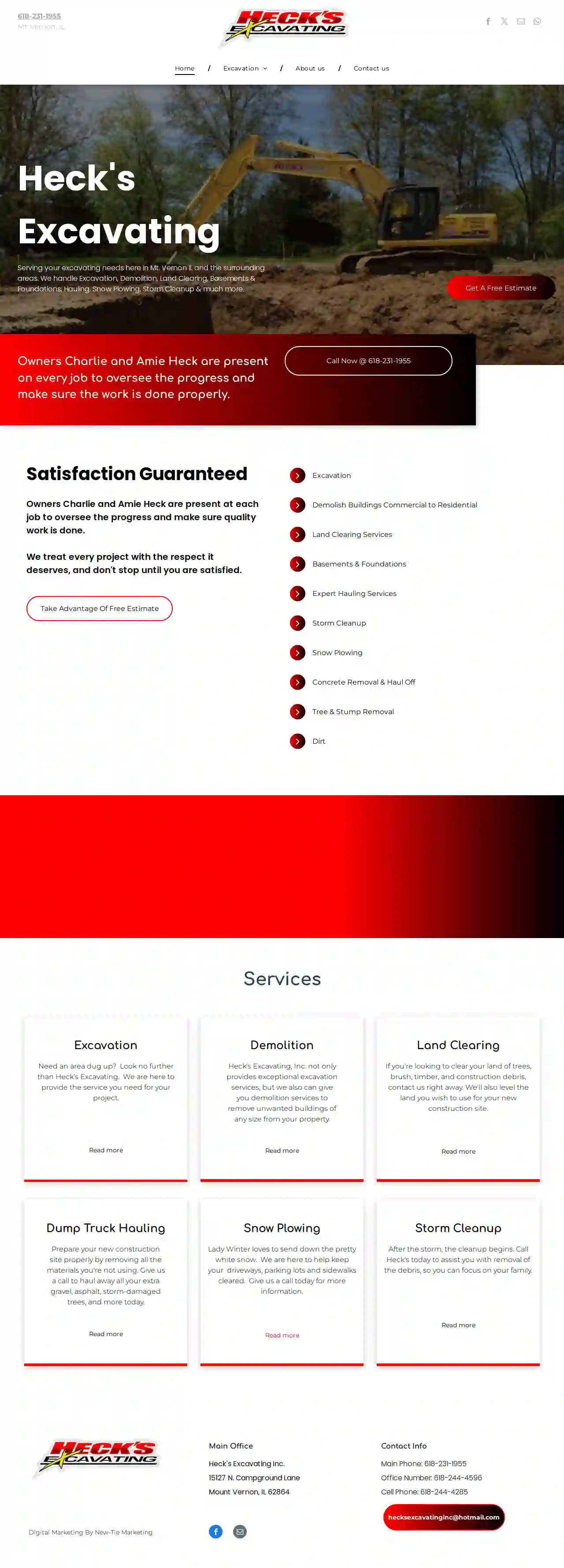
Heck’s Excavating
15127 N. Campground Lane, Mount Vernon, 62864, USHeck's Excavating: Your Trusted Partner for Excavation and More Heck's Excavating Inc. has been serving the Mt. Vernon, IL area and surrounding communities since 2009. We are a family-owned business dedicated to providing high-quality excavation, demolition, and other services with a commitment to customer satisfaction. Our Commitment to Quality Owners Charlie and Amie Heck are personally involved in every project, ensuring that every job is completed to the highest standards. We believe in treating every project with the respect it deserves, and we don't stop until you are completely satisfied. A Wide Range of Services From excavation and demolition to land clearing, basement and foundation work, hauling, snow plowing, and storm cleanup, Heck's Excavating is your one-stop shop for all your project needs. We are equipped to handle projects of all sizes, both residential and commercial. Experience the Heck's Difference We take pride in our work and treat every job as if it were our own home or office. Our commitment to quality, service, and customer satisfaction sets us apart. Choose Heck's Excavating for a reliable and trustworthy partner for your next project.
- Services
- Why Us?
- Our Team
- Gallery
Get Quote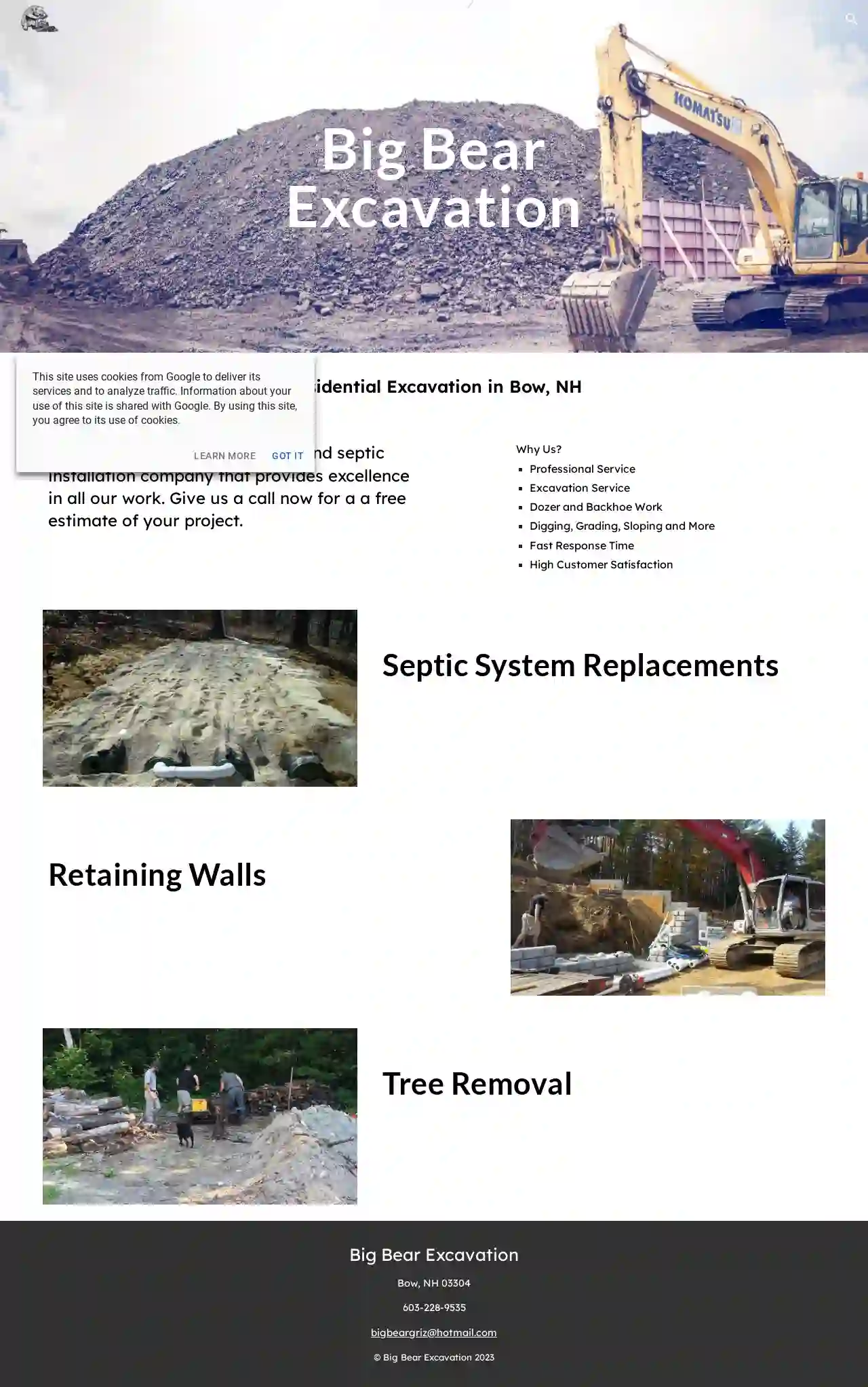
Big Bear Excavation
51 reviewsBow, 03304, USBig Bear Excavation We are a residential excavation and septic installation company that provides excellence in all our work. Give us a call now for a free estimate of your project. Why Us? Professional Service Excavation Service Dozer and Backhoe Work Digging, Grading, Sloping and More Fast Response Time High Customer Satisfaction Septic System Replacements Retaining Walls Tree Removal
- Services
- Why Us?
- Gallery
Get Quote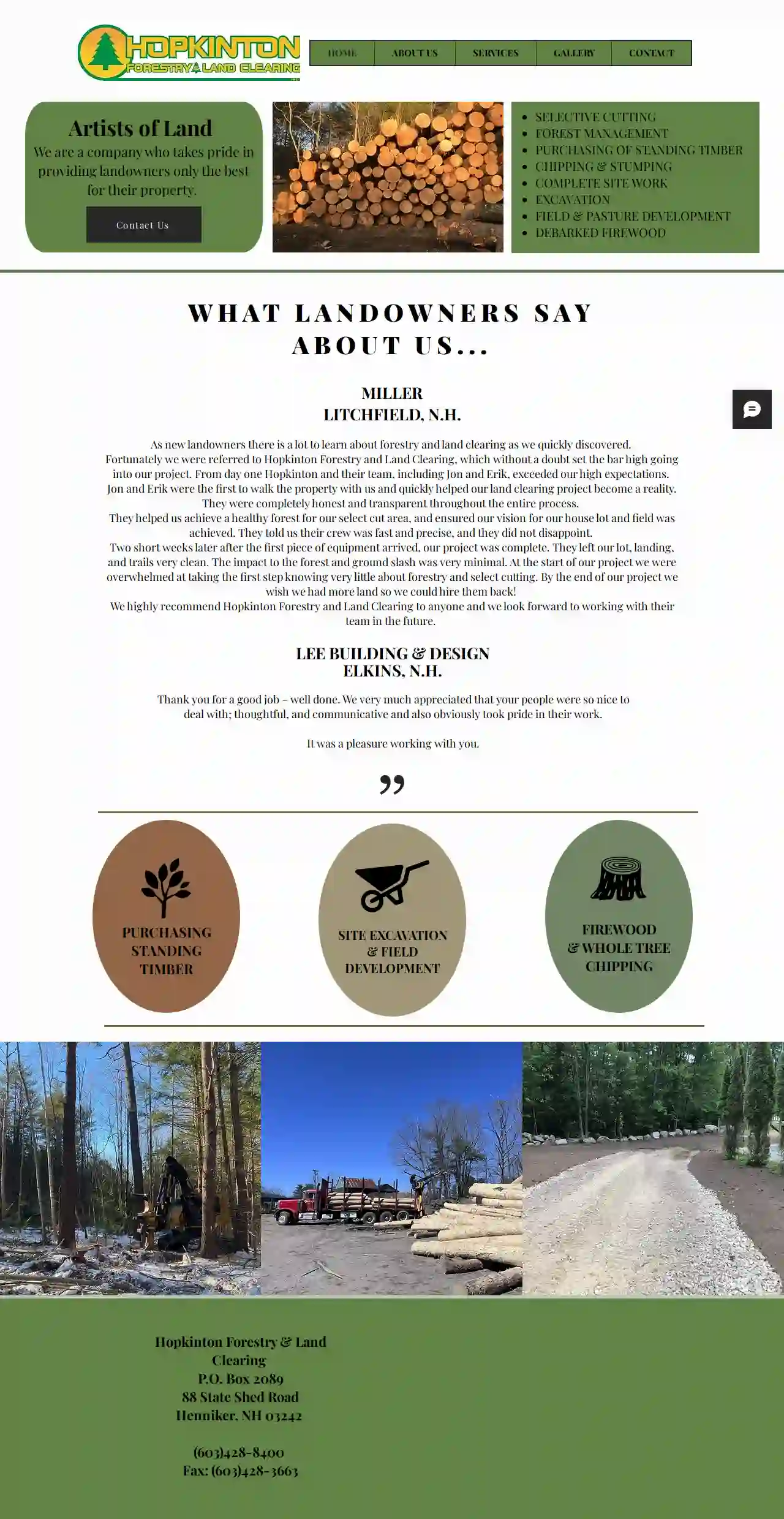
Hopkinton Forestry & Land Clr
52 reviewsP.O. Box 2089, 88 State Shed Road, Henniker, 03242, USArtists of Land We are a company who takes pride in providing landowners only the best for their property. As new landowners there is a lot to learn about forestry and land clearing as we quickly discovered. Fortunately we were referred to Hopkinton Forestry and Land Clearing, which without a doubt set the bar high going into our project. From day one Hopkinton and their team, including Jon and Erik, exceeded our high expectations. Jon and Erik were the first to walk the property with us and quickly helped our land clearing project become a reality. They were completely honest and transparent throughout the entire process. They helped us achieve a healthy forest for our select cut area, and ensured our vision for our house lot and field was achieved. They told us their crew was fast and precise, and they did not disappoint. Two short weeks later after the first piece of equipment arrived, our project was complete. They left our lot, landing, and trails very clean. The impact to the forest and ground slash was very minimal. At the start of our project we were overwhelmed at taking the first step knowing very little about forestry and select cutting. By the end of our project we wish we had more land so we could hire them back! We highly recommend Hopkinton Forestry and Land Clearing to anyone and we look forward to working with their team in the future. Thank you for a good job – well done. We very much appreciated that your people were so nice to deal with; thoughtful, and communicative and also obviously took pride in their work. It was a pleasure working with you.
- Services
- Why Us?
- Testimonials
- Gallery
Get Quote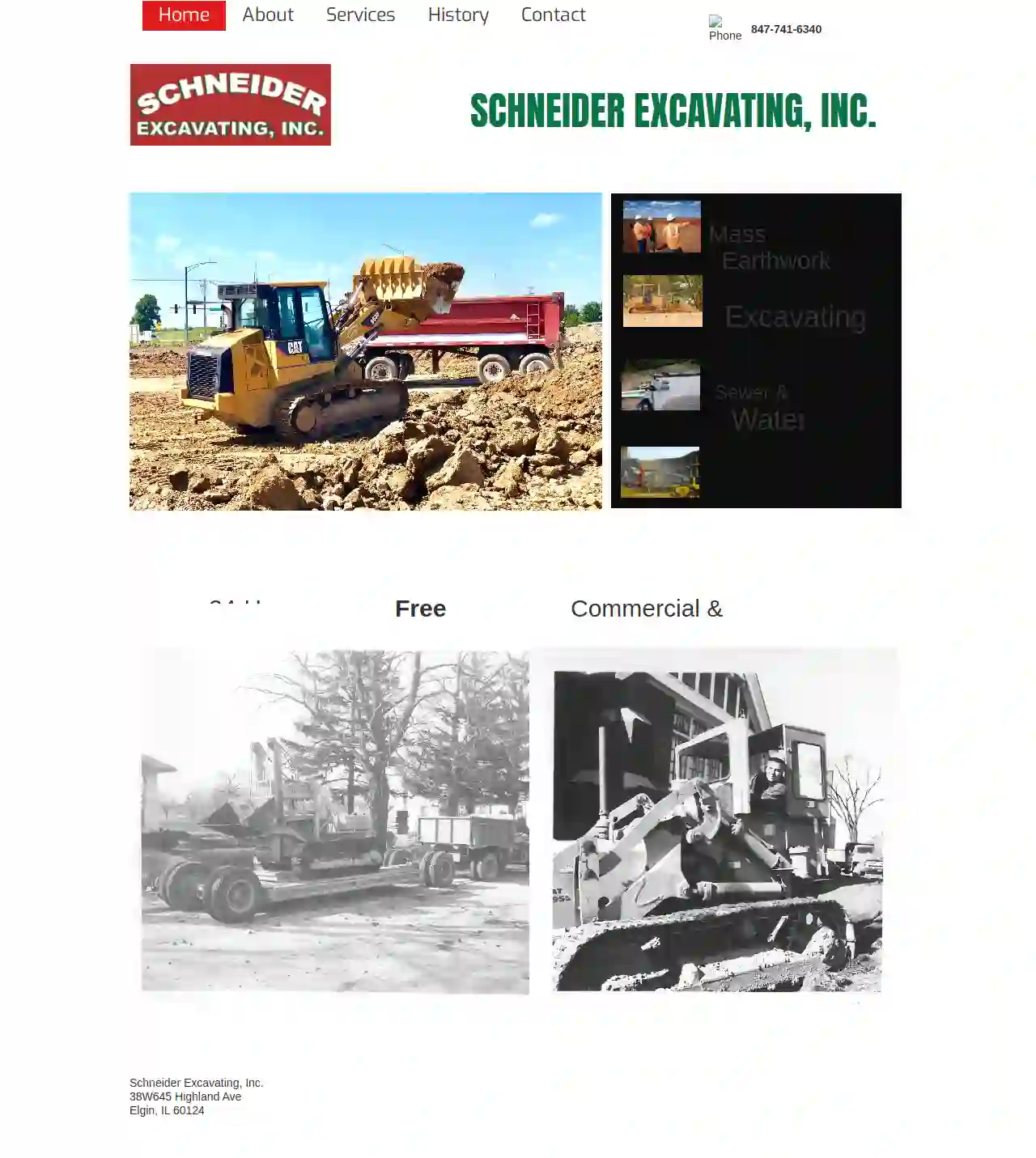
Schneider Excavating Inc.
52 reviews38W645 Highland Ave, Elgin, 60124, USAbout Schneider Excavating, Inc. Established in 1932, Schneider Excavating, Inc. strives to be the go-to company for all your excavation needs. We specialize in Mass Earthwork, Excavating, Sewer & Water, and Demolition, offering a level of expertise that sets us apart from other contractors. With over 85 years of experience, we've become experts in excavating for virtually any project. Beyond our contracting certifications, we adhere to strict industry guidelines, incorporating standards set by the EPA and OSHA. This commitment ensures every project detail is addressed, resulting in exceptional work. We are dedicated to doing right by those who place their trust in us. Proudly serving Elgin & the Fox Valley since 1932, Schneider Excavating, Inc. is here to assist you, whether you have a 50-acre site requiring hundreds of thousands of cubic yards of earth movement or a small municipal site with minor infrastructure additions. Many of our clients are Design/Build contractors with projects ranging from 30,000 square feet to a million square feet. We work closely from budget to build-out, ensuring we stay on schedule and within budget. We have collaborated with a wide range of Contractors, Project Managers, Engineering Firms, Architects, and Private Companies in and around the Elgin area. No matter the size, scope, or uniqueness of your project, we can provide references for your specific type of work. Feel free to contact us anytime!
- Services
- Why Us?
- Our Team
- Testimonials
- Gallery
Get Quote
Quality Excavation Inc
54 reviewsChicago, USQuality Excavation: Your Trusted Chicagoland Excavation Partner Quality Excavation is a full-service excavation contractor serving Chicagoland for over 25 years. We're dedicated to providing our clients with the highest level of personalized service and professionalism. Our highly skilled team is committed to building lasting relationships by delivering exceptional work on time and within budget. We prioritize safety, efficiency, and customer satisfaction. We're proud of our strong affiliations and good standing with the International Union of Operating Engineers and the Construction and General Laborers Union over the past two decades. We look forward to building a mutually beneficial partnership with you. Contact us today for a free estimate on your next project!
- Services
- Why Us?
Get Quote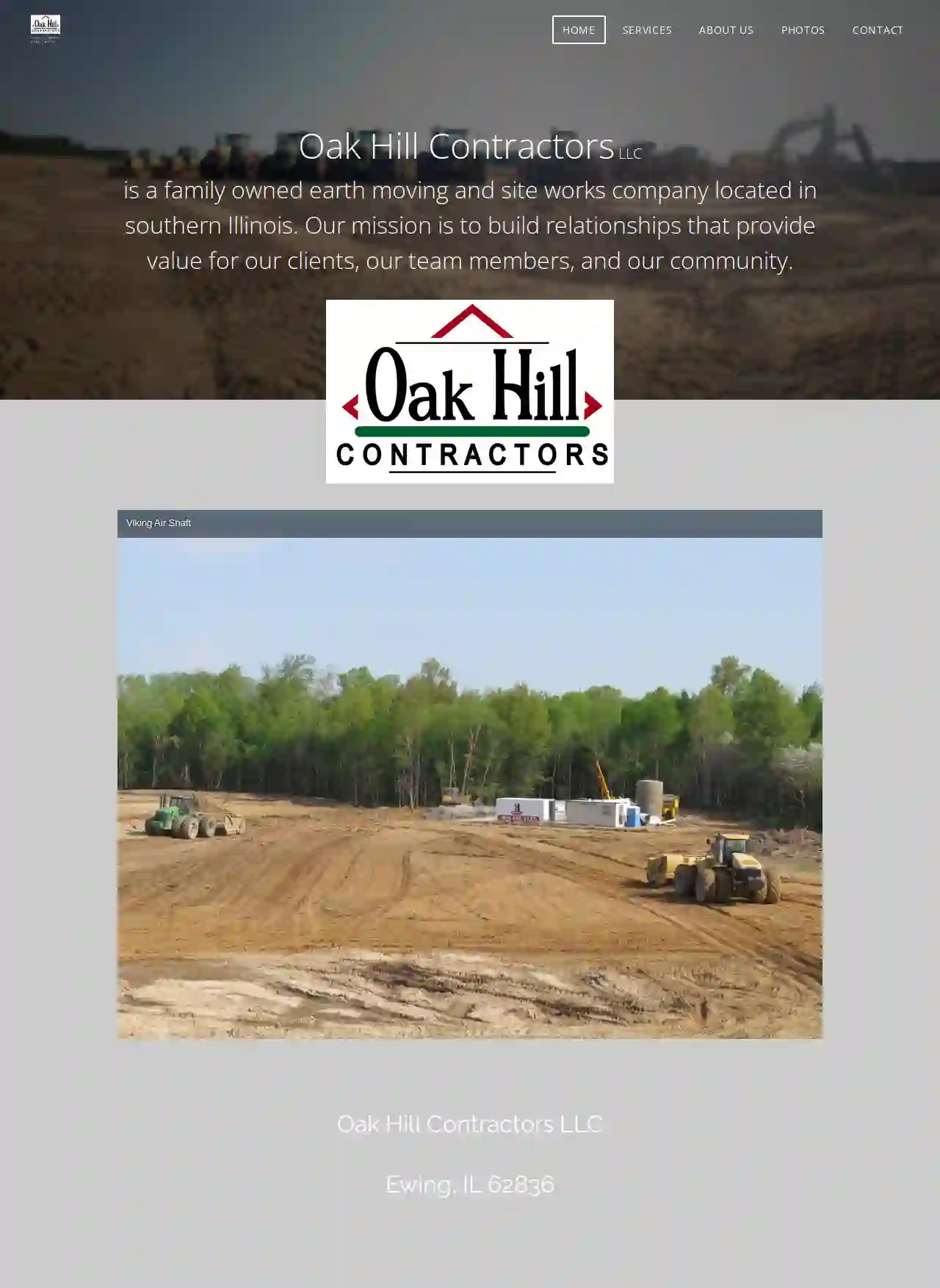
Oak Hill Contractors LLC
53 reviews20245 Ewing Road, Ewing, 62836, USAbout Oak Hill Contractors LLC Oak Hill Contractors LLC is a family-owned earth moving and site works company based in southern Illinois. We are dedicated to building strong relationships with our clients, team members, and the community, ensuring value for everyone involved. Our commitment to quality work and a wide range of equipment allows us to handle projects of all sizes. We utilize GPS-equipped machines for efficient and accurate grading work, ensuring precision and timely completion. We are proud to be Prequalified by IDOT and have MSHA-trained personnel. We are also fully insured, providing peace of mind to our clients. Take a look at one of our recent projects: Sugar Camp Refuse Expansion.
- Services
- Why Us?
- Gallery
Get Quote- Ry
Ryan Excavating
51 reviewsChicago, USFacebook is a social networking service and website launched in February 2004, owned by Meta Platforms. It is the largest social network in the world, with over 2.91 billion monthly active users as of the first quarter of 2023. Users can create a personal profile, add other users as friends, and exchange messages, photos, and videos. Facebook is also used by businesses to connect with customers and promote their products and services. The site has been criticized for its role in the spread of misinformation, its impact on mental health, and its privacy practices.
- Services
- Why Us?
- Gallery
Get Quote 
Bacon Excavation LLC
58 reviews38 Lawrence Road, Weare, 03281, USAbout Us Bacon Excavation was established in 2020 after the onset of the pandemic. We are a family-owned business and enjoy serving our neighbors. Trust, kindness, and communication are some of the core values that we hold in working with our customers. We regard attention to detail and outstanding customer service as the highest priorities in the success of a completed project. Having the opportunity to do what we love and to work with a variety of people has been/is a blessing. Our Team This is your Team section. Briefly introduce the team then add their bios below. Click here to edit. Owner Joe Bacon Add a short bio for each team member. Make it brief and informative to keep visitors engaged. Owner Stacia Bacon Add a short bio for each team member. Make it brief and informative to keep visitors engaged. Operator/Mechanic Gary Trahan Add a short bio for each team member. Make it brief and informative to keep visitors engaged.
- Services
- Why Us?
- Our Team
- Gallery
Get Quote
Over 22,076+ Excavation Companies on our platform
Our excavation companies operate in O'Fallon & surrounding areas!
ExcavationHQ has curated and vetted the Best Excavation Pros arround O'Fallon. Find a top & trustworthy business today.
Frequently Asked Questions About Excavation Contractors
- Soil Type and Stability: Stable, cohesive soils allow for deeper excavations than loose or unstable soils.
- Groundwater Level: Excavations below the water table require dewatering techniques to manage water intrusion.
- Equipment and Resources: The size and capabilities of excavation equipment influence the achievable depth.
- Safety Regulations: OSHA and other safety regulations impose limitations on trench depths without proper shoring or sloping.
- Project Requirements: The purpose of the excavation (basement, pool, foundation) determines the necessary depth.
- Project Size and Scope: The larger and more complex the excavation, the higher the cost.
- Soil Type: Different soil types require different equipment and techniques, impacting costs. Rocky or clay-rich soil can be more expensive to excavate than loose soil.
- Accessibility: Difficult-to-access sites might require specialized equipment or additional labor, increasing expenses.
- Disposal Costs: Hauling away excavated material (soil, rocks, etc.) to disposal sites incurs additional fees.
- Permits and Inspections: Depending on local regulations, permits and inspections might be required, adding to the overall cost.
- Excavators: Versatile machines with a bucket, arm, and rotating cab for digging, lifting, and moving earth.
- Backhoes: Similar to excavators but with a digging bucket on the back and a loader bucket on the front, ideal for trenching and smaller excavations.
- Bulldozers: Powerful machines with a large blade for pushing earth, clearing land, and leveling surfaces.
- Skid Steers: Compact and maneuverable loaders with various attachments (buckets, forks) for digging, loading, and grading in tight spaces.
- Trenchers: Specialized machines for digging narrow trenches for utilities.
- Dump Trucks: Vehicles for hauling excavated material to disposal sites.
What is the difference between cut and fill excavation?
Cut: Involves excavating soil from an area where the existing grade is higher than the desired grade.
Fill: Refers to using the excavated soil ('cut' material) to raise the grade in an area where the existing grade is lower than desired.
This method minimizes the need to import or export soil, reducing costs and environmental impact. It's commonly used for site preparation, road construction, and landscaping.
How deep can you excavate?
How much does excavation cost?
What equipment is used for excavation?
What is the difference between cut and fill excavation?
Cut: Involves excavating soil from an area where the existing grade is higher than the desired grade.
Fill: Refers to using the excavated soil ('cut' material) to raise the grade in an area where the existing grade is lower than desired.
This method minimizes the need to import or export soil, reducing costs and environmental impact. It's commonly used for site preparation, road construction, and landscaping.
How deep can you excavate?
- Soil Type and Stability: Stable, cohesive soils allow for deeper excavations than loose or unstable soils.
- Groundwater Level: Excavations below the water table require dewatering techniques to manage water intrusion.
- Equipment and Resources: The size and capabilities of excavation equipment influence the achievable depth.
- Safety Regulations: OSHA and other safety regulations impose limitations on trench depths without proper shoring or sloping.
- Project Requirements: The purpose of the excavation (basement, pool, foundation) determines the necessary depth.
How much does excavation cost?
- Project Size and Scope: The larger and more complex the excavation, the higher the cost.
- Soil Type: Different soil types require different equipment and techniques, impacting costs. Rocky or clay-rich soil can be more expensive to excavate than loose soil.
- Accessibility: Difficult-to-access sites might require specialized equipment or additional labor, increasing expenses.
- Disposal Costs: Hauling away excavated material (soil, rocks, etc.) to disposal sites incurs additional fees.
- Permits and Inspections: Depending on local regulations, permits and inspections might be required, adding to the overall cost.
What equipment is used for excavation?
- Excavators: Versatile machines with a bucket, arm, and rotating cab for digging, lifting, and moving earth.
- Backhoes: Similar to excavators but with a digging bucket on the back and a loader bucket on the front, ideal for trenching and smaller excavations.
- Bulldozers: Powerful machines with a large blade for pushing earth, clearing land, and leveling surfaces.
- Skid Steers: Compact and maneuverable loaders with various attachments (buckets, forks) for digging, loading, and grading in tight spaces.
- Trenchers: Specialized machines for digging narrow trenches for utilities.
- Dump Trucks: Vehicles for hauling excavated material to disposal sites.